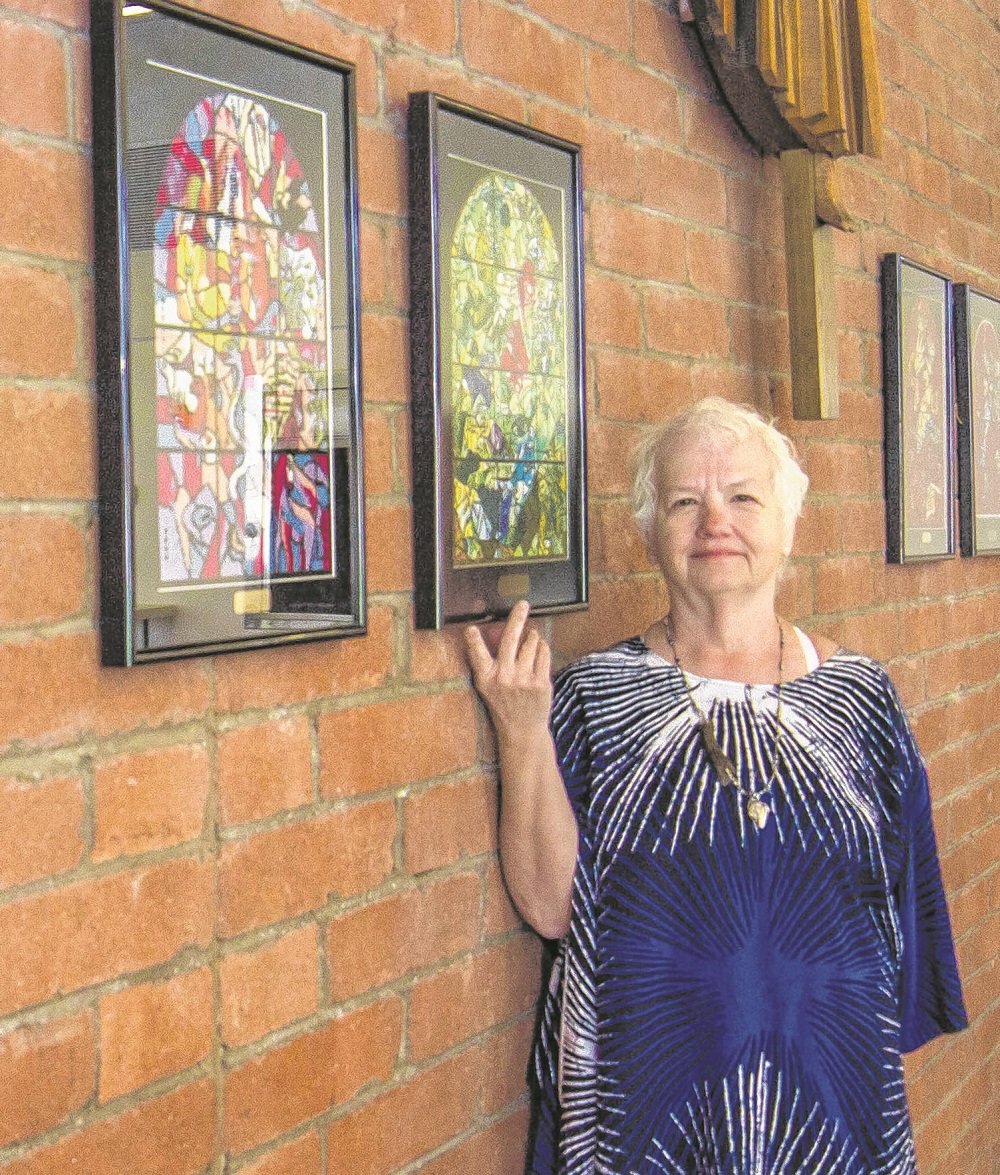
By Joyce Coronel
With Easter and Passover just around the corner, Christians and Jews turn their hearts toward Israel. For many, a trip to the Holy Land represents the culmination of a lifetime of hopes and dreams.
For those who can’t make the journey, a bit of Israel has come to Arizona. That’s because an impressive display of colorful needlepoint renditions of the stained-glass windows created by Marc Chagall representing the 12 tribes of Israel is on display at Epiphany Episcopal Church in Tempe.
The brilliant red, blue, yellow and green hues in the stitching mirror that seen in the 11- foot by eight-foot windows designed by Chagall that grace the synagogue inside the Haddassah Medical Center in Jerusalem.
So how did the needlepoint creations symbolizing the 12 sons of Jacob wind up in Tempe? The path to the Grand Canyon state has been a circuitous one indeed. It all began in 1976 when Pat McKewin and her husband, an Episcopal priest, led a tour to Israel. On the very first day, one of the pilgrims, McKewin’s friend, suffered a stroke and wound up in the Haddassah Medical Center.
While the tour continued without them, McKewin stayed in the hospital with her friend. She visited the synagogue at the medical center and noticed the 12 stained-glass windows.
Lyn Jensen, a parishioner at Epiphany, was on the tour that year and remembers that McKewin found a needlepoint kit at the hospital that depicted one of the windows. Working steadily over the years, she managed to complete the first seven kits.
“Eventually, she got crippled with arthritis to the point where she couldn’t finish it,” Jensen said.
Molly Voita, McKewin’s daughter, pitched in to help. “In about 1997, the arthritis won and she couldn’t finish number eight. So, for her birthday that year I finished that one,” Voita said.
Recalling the moment, Voita explained that the eight needlepoint creations looked more like craft projects since they weren’t professionally matted and framed due to her mother’s limited means. During Christmas of 1997, McKewin was in the hospital battling an infection and Voita and her sisters decided to have all eight canvasses framed correctly.
“They went from cute little craft projects to serious art,” Voita said. “She actually saw all eight of them hang in her little Section 8 apartment in Minneapolis. And she died two weeks later.”
And that, Voita thought, was the end of that. Except her father placed the completion of the Twelve Tribes of Israel needlepoint project at the top of his bucket list.
“My dad, who was an Episcopal priest, had all the subtlety of a sledge hammer,” Voita laughed. “‘Oh, if I only had Joseph before I die.’ He was the drama king himself. And you, know, ‘Couldn’t you girls finish off the rest of them?’”
Voita’s sister, who was a seminary student at the time, found out the rest of the needlepoint kits could be purchased from a catalog. The last four windows, it turns out, were much more intricate.
“It took us another three years to get the last four done,” Voita said. “I did all the black work of the outlining and leading on all four and I did Isaachcar, the green one. My sister Barb, the Methodist pastor, did Joseph.”
Voita’s daughter, Sheila, and granddaughter, Dialyn, stitched Zebulon.
Simeon was the last “window” to be completed and was stitched by multiple people, including Voita’s husband.
“Anyone who wanted to learn how to needlepoint or would sit still and needlepoint while we would do ours, could work on Simeon,” Voita said. The last of the canvasses to be stitched, Simeon was completed in 2008.
One of the creations looks slightly different. Just before having Issachar framed, Voita read that the Chagall windows were badly damaged in the 1967 Six Day War. The artist was still alive at the time and repaired the windows, all except for one. He left a bullet hole in Issachar so that people would never forget the war that might have ended differently. Voita added a sequin and a pearl to the Issachar canvass to indicate where the bullet hole is.
What began in 1976 as a way to pass the time at a friend’s bedside ultimately became an heirloom project spanning four generations of women. The 12 colorful pieces are on loan to Epiphany Church, but Voita and Jensen both said the hope is that other churches will also have the opportunity to enjoy them for a spell.
“This was our mother’s dream, to get all 12 done and that they should go out on loan to all the different churches that would like to have them,” Voita said. “They’ve been to three or four plus a seminary, so they’re getting out.”
Voita finally made her own journey to Israel in 2009, after the needles and embroidery floss had been put away and the canvasses were all framed.
“It was my mother’s project,” Voita said. “But after I went to the Haddassah Medical Center in Jerusalem and saw the real ones, then it was my project too.”

